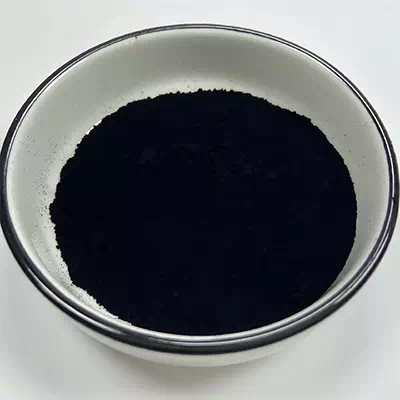

CAS number:64365-11-3
molecular formula:CH4
molecular weight:16.0400009155273
EINECS number:264-846-4
Activated carbon,plant nutshell;Activated carbon for sugar;Csirbon,activated;SHIRASAGI powder active carbon;Norit(R) A pract.;Nut shell activated carbon;huoxingt;Honeycomb activated carbon
Chemical Products - Inorganic Chemicals; Chemical Products - Organic Chemicals; Pharmaceutical Excipients; Inorganic Salts; Other Processing Agents; Food Processing Aids; Food Additives; Filtering Adsorbents; Catalysts and Chemicalbook Auxiliaries; Molecular sieves; raw materials; inorganic salts; chemical materials; daily chemicals; pharmaceutical raw materials; chemical reagents; chemical raw materials; activated carbon; carbon materials
Activated carbon is a carbon material with a large specific surface area and strong adsorption and decolorization ability. In the 19th century, people used it to decolorize, deodorize and purify sugar, wine and water. The use of bone charcoal for water filtration also has a history of more than 100 years. In the First World War, activated charcoal began to be used to make gas masks. By the 1990s, it has been widely used in sewage treatment, concentration and recovery of organic solvents, air purification and other environmental protection, gold extraction and other fields.
The carbon material remaining after carbonization of organic matter at 600-700°C has the ability to activate or activate. However, these carbon materials firmly adsorb some gaseous hydrocarbons and other substances, which reduces their activation ability and requires raising the carbonization temperature to above the critical temperature for the formation of activated carbon. In order to decompose and decompose the adsorbed gaseous Chemicalbook state substances. Then, it is activated with water vapor, carbon dioxide, etc. to improve the activation ability to reach the industrial application level. The adsorption of activated carbon is due to the abundant micropores inside, that is, a large specific surface area. Therefore, the key point of activated carbon production is to use organic matter to generate as many micropores as possible during the carbonization and activation process.
| Solubility | Practically insoluble in all usual solvents |
Black porous odorless substance, the particle shape can range from cylindrical, coarse particles to fine powder particles, the particle diameter is generally 1~6mm, and the length is about 0.7~4 times the diameter. Or irregular particles with 6~120 mesh size. Odorless, tasteless, insoluble in water and organic solvents. The packing density is about 0.3~0.6g/ml, the volume of Chemicalbook micro-cell is about 0.6~0.8ml/g, and the specific surface area is about 500~1500m2/g. It has a strong adsorption force on organic macromolecular substances, so it has a high removal capacity for trace components, pigments, odor substances in the liquid phase. The most suitable pH value is 4.0~4.8, and the optimal temperature is 60~70℃.
● Decolorizing agent; deodorizing agent; deodorizing agent; purifying agent in food production. It is widely used in the decolorization and purification of beverages such as sucrose, glucose, caramel, oil, fruit juice and wine, removal of colloidal substances and water quality treatment. GB2760-96 is listed as processing aid. The dosage is determined according to production needs. The general maintenance time is 30min.
● Used for pressure swing adsorption to separate air to produce nitrogen
● Mainly used in the decolorization, purification and refining of Chinese and Western technical medicines and food additives in the pharmaceutical industry
● It is suitable for decolorization and deodorization in the production of brewing industry, edible oil and food additives. It has special decolorization ability of polymer pigments such as caramel and molasses.
● Can be used for desulfurization, water purification, air purification, solvent recovery, adsorption and as catalyst carrier, etc.
● For removal of hydrogen sulfide in coal gas, coke oven gas, natural gas, carbon dioxide and shift gas
● Used for air filtration, purification, removal of harmful gases, etc.
● Mainly used for deodorization, dechlorination and liquid decolorization of food, beverage, medicine and high-purity drinking water, and also widely used in solvent recovery and gas separation in chemical industry, etc.
● It is widely used in the pretreatment of industrial water and domestic water and the deep purification treatment of industrial sewage such as chemical industry, printing and dyeing, electronics, coking, environmental protection, etc.
● Widely used in the recovery of organic solvents such as toluene, xylene, ether, ethanol, acetone, gasoline, trichloropropane and carbon tetrachloride
● It is used to adsorb harmful substances in gas phase and liquid phase, remove various organic vapors, filter harmful gases and odors in the air, etc.
● There are activated carbon for injection, activated carbon for gas phase adsorption, activated carbon for solvent recovery, etc., which can be used for desulfurization, water purification, air purification, solvent recovery, adsorption, catalyst and as catalyst carrier.
Organic raw materials that can be carbonized and activated include wood chips, peat, lignite, charcoal fiber residues, animal bones, nut shells, petroleum coke, etc., which are activated at high temperature after adding or not adding inorganic salts to activated gases such as water vapor and carbon dioxide. Carbonization and activation. It can also be prepared by carbonization with chemical active agents such as phosphoric acid or zinc chloride at high temperature, and then washing with water to remove chemical active agents.
Sales hotline:

 Scan and consult wechat customer service
Scan and consult wechat customer service